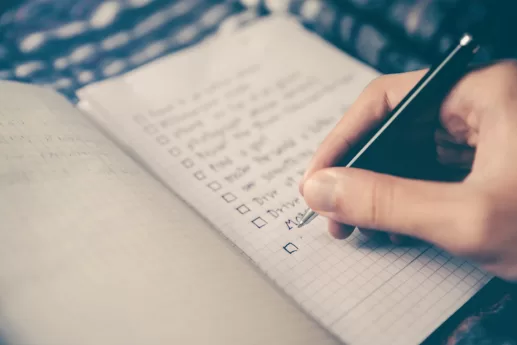How to Set Clear Goals in 5 Steps
SMART Goal Framework: The Blueprint to Your Success
Achieving success, whether personal or professional, often boils down to one foundational element: setting clear and actionable goals. Without clarity and direction, even the most motivated individuals can feel stuck. This blog will guide you through goal-setting tips and strategies for how to set clear goals using proven strategies such as the SMART Goal Framework, visualization techniques, and breaking down large goals into manageable steps. Let’s chart a course toward your dreams!
Why Setting Clear Goals Matters
Goals are the stepping stones that transform dreams into reality. They provide focus, fuel motivation, and create a roadmap for success. Clear goals eliminate ambiguity, making it easier to prioritize tasks and measure progress. When you’re specific about what you want to achieve, you can channel your energy toward activities that bring you closer to your aspirations.
Introducing the SMART Goal Framework

One of the most effective ways to set clear goals is by following the SMART Goal Framework. This method ensures that your objectives are well-defined and achievable. Let’s break it down:
S – Specific
Define your goal in clear, precise terms. Ask yourself:
- What exactly do I want to achieve?
- Why is this goal important?
- Who is involved?
Example: Instead of saying, “I want to get healthy,” specify, “I want to lose 10 pounds by eating balanced meals and exercising three times a week.”
M – Measurable
Quantify your goal to track progress and know when you’ve achieved it.
- How will you measure success?
- What metrics will you use?
Example: If your goal is to save money, state, “I want to save $5,000 by the end of the year.”
A – Achievable
Set goals that are realistic given your resources and constraints.
- Do I have the tools or skills to achieve this?
- Is the timeline reasonable?
Example: If you’re new to running, aiming for a marathon in one month might be unrealistic, but training for a 5K is achievable.
R – Relevant
Align your goals with your broader life or career aspirations.
- Why does this goal matter to me?
- How does it align with my long-term vision?
Example: If your long-term aim is career growth, a relevant goal might be, “I want to complete a certification course in my field within six months.”
T – Timely
Set a deadline to create a sense of urgency and focus.
- When will I achieve this goal?
- What can I do today to start?
Example: “I will write the first draft of my novel by March 31st.”
By making your goals SMART, you set yourself up for success with clear and actionable goals. Learn more about writing your SMART goals at MindTools.
Visualization Techniques for Success: The Power of Your Mind’s Eye
Visualization is a powerful tool that can help you stay motivated and focused on your goals. It involves imagining yourself achieving your objectives and experiencing the emotions that come with success. This technique is more than daydreaming; it’s a deliberate practice used by top athletes, business leaders, and creatives to enhance performance and clarity.
How to Visualize Effectively
- Create a Detailed Picture: Close your eyes and vividly imagine achieving your goal. Include as many sensory details as possible.
- Use Affirmations: Repeat positive statements that reinforce your belief in your ability to succeed.
- Incorporate Vision Boards: Use images, quotes, and symbols that represent your goals. Place your vision board where you’ll see it daily. Explore vision boards on Pinterest.
- Practice Daily: Dedicate a few minutes each day to visualization. This consistent practice reinforces your goals in your subconscious mind.
Benefits of Visualization
- Increased Motivation: Seeing yourself succeed can fuel your drive to take action.
- Reduced Anxiety: Visualizing a positive outcome helps you feel more prepared and confident.
- Enhanced Focus: It keeps your mind centered on what truly matters, minimizing distractions.

Breaking Down Big Goals into Small Steps
Large goals can feel overwhelming, but breaking them into smaller, manageable steps makes them less daunting. This approach not only simplifies the process but also provides a sense of accomplishment with each milestone achieved.
Steps to Break Down Big Goals
- Define the End Goal: Be crystal clear about what you want to achieve.
- Identify Key Milestones: Break your goal into major stages or benchmarks.
- Create Actionable Tasks: For each milestone, list specific tasks that need to be completed.
- Set Deadlines: Assign a timeline to each task to maintain momentum.
- Review and Adjust: Regularly evaluate your progress and make adjustments as needed. Learn how to track your goal progress at DailyGrind.
Example Goal: Launch a small business in six months.
- Milestone 1: Research market trends (Month 1)
- Task: Conduct surveys.
- Task: Analyze competitor offerings.
- Milestone 2: Develop a business plan (Month 2)
- Task: Outline objectives.
- Task: Draft financial projections.
- Milestone 3: Secure funding (Month 3)
- Task: Explore loan options.
- Task: Meet with potential investors.
By focusing on one step at a time, you’ll avoid feeling overwhelmed and maintain consistent progress.
Conclusion: you can achieve your goals step by step
Setting clear goals is the foundation of any successful journey. By adopting the SMART Goal Framework, harnessing the power of visualization, and breaking down big goals into smaller, actionable steps, you can transform your aspirations into tangible achievements. Remember, every great accomplishment starts with a well-defined goal and a commitment to take that first step.
Begin your journey today—dream big, act small, and visualize your success. The future is yours to create!








